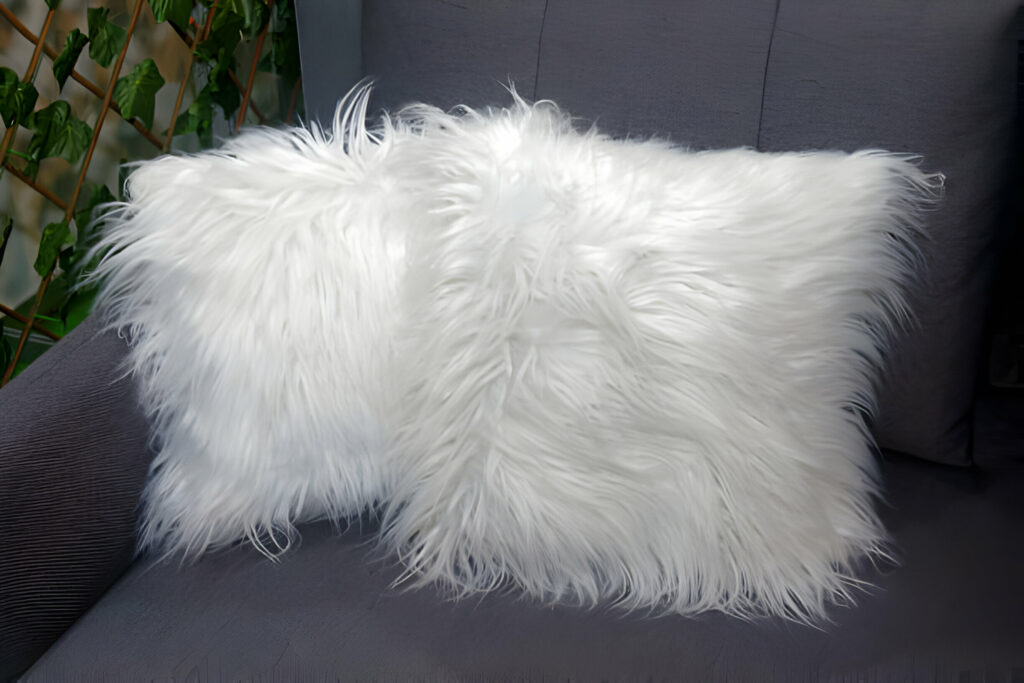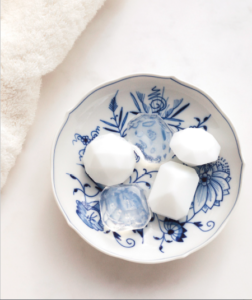In today’s fast-paced and chaotic world, finding moments of tranquility and calm is essential for our well-being. One way to cultivate serenity is by creating a tranquil home sanctuary, a space that nourishes the soul, eases the mind, and rejuvenates the spirit. In this article, we will explore the art of crafting a tranquil home sanctuary, offering practical tips and inspiration to help you create a space that brings peace and harmony into your daily life.

Table of Contents
Understanding the Concept of a Home Sanctuary
A home sanctuary is more than just a physical space; it is a place where you can escape the pressures of the outside world and reconnect with yourself. Whether it’s a cozy corner in your living room, a tranquil bedroom, or a serene outdoor space, a sanctuary should be a reflection of your personal tastes and provide a sense of comfort and calm. By carefully curating your surroundings, you can create a peaceful retreat that promotes relaxation and mindfulness.
Creating a Tranquil Atmosphere
The first step in crafting a tranquil home sanctuary is to establish a serene atmosphere. Consider incorporating elements that appeal to your senses, such as soothing colors, soft lighting, and natural materials. Soft, neutral hues like soft blues, gentle greens, and warm earth tones can create a calming backdrop, while natural light and gentle, ambient lighting can help to set a tranquil mood. Incorporating natural materials such as wood, stone, and soft textiles can further enhance the peaceful ambiance.
Furnishing Your Sanctuary with Comfort and Style

The furniture you choose for your sanctuary should be both comfortable and aesthetically pleasing. Consider investing in plush seating, cozy throws, and soft cushions to create a welcoming and inviting space. Balance functionality with style when selecting furniture pieces, and opt for designs that promote relaxation and comfort. Whether it’s a comfortable armchair, a cozy chaise lounge, or a luxurious daybed, the key is to choose furnishings that make you feel at ease and at peace.
Bringing Nature Indoors

Bringing elements of nature into your home sanctuary can foster a deeper sense of tranquility. Consider incorporating living plants, natural materials, and organic textures to create a connection to the outdoors. Indoor plants not only add a touch of greenery but also purify the air and contribute to a calming, natural ambiance. Additionally, incorporating nature-inspired artwork, such as botanical prints or landscape paintings, can further evoke a sense of serenity and connection to the natural world.
Embracing Mindful Design
Mindful design focuses on creating spaces that support mental and emotional well-being. In a tranquil home sanctuary, mindful design principles can be applied to promote relaxation and mindfulness. By decluttering your space, organizing with intention, and embracing simplicity, you can cultivate a sense of calm and serenity. Incorporating elements of feng shui, the ancient Chinese practice of harmonizing energy flow, can also help create a balanced and harmonious environment.
Personalized Touches and Sentimental Objects

Adding personal touches and sentimental objects to your sanctuary can create a deeper sense of connection and warmth. Incorporate items that hold special meaning to you, such as treasured family heirlooms, handmade crafts, or meaningful artwork. By surrounding yourself with objects that bring joy and evoke positive memories, you can infuse your sanctuary with a sense of emotional comfort and personal significance.
Creating Space for Mindfulness and Reflection

A tranquil home sanctuary can also serve as a space for mindfulness and reflection. Consider incorporating elements that encourage self-care and introspection, such as meditation cushions, yoga mats, or a cozy reading nook. By designating a specific area for activities that promote inner peace and self-awareness, you can cultivate a dedicated space for personal growth and self-discovery within your sanctuary.
The Role of Aromatherapy and Sound

Aromatherapy and sound can be powerful tools for creating a tranquil atmosphere within your home sanctuary. Consider incorporating essential oil diffusers, scented candles, or natural incense to infuse your space with calming fragrances. Additionally, exploring the use of soothing sounds, such as nature sounds or gentle music, can further enhance the peaceful ambiance of your sanctuary, promoting relaxation and stress relief.
Maintaining Balance and Harmony
Creating a tranquil home sanctuary is an ongoing process that requires attention to balance and harmony. Regularly assess your space and make adjustments as needed to maintain a sense of tranquility. Eliminate clutter, reorganize as necessary, and refresh your sanctuary with seasonal touches to keep it feeling renewed and rejuvenating. By taking a mindful approach to maintaining your sanctuary, you can ensure that it continues to be a source of peace and serenity in your daily life.
Tips for decluttering and organizing a space in order to cultivate a sense of serenity at home
- Start with small sections: Trying to declutter an entire room at once can be overwhelming. Start with one small area, such as a desk or a single shelf, and work on decluttering and organizing that section before moving on to the next.
- Use the “one in, one out” rule: For every new item that comes into your home, try to remove an old item to keep clutter from building up again.
- Create designated spaces: Designate specific areas for different items, such as a designated spot for keys, a designated spot for mail, and so on. This can help keep things organized and make it easier to find what you need.
- Use storage solutions: Use storage bins, baskets, and organizers to keep items neatly stored and out of sight. Labeling these containers can also make it easier to find things when you need them.
- Declutter regularly: Make decluttering a regular part of your routine to prevent clutter from building up. Set aside a specific time each week to go through and organize different areas of your home.
- Simplify and minimize: Consider what items you really need and use on a regular basis, and let go of things that are no longer serving a purpose in your life.
- Create a calming environment: Once you’ve decluttered and organized your space, add elements that promote a sense of serenity, such as calming colors, natural light, and plants.
- Take breaks: Decluttering can be a mentally and physically taxing process, so be sure to take breaks and give yourself time to rest and recharge.
Color, lighting, and furniture arrangements all play a significant role in creating a restful and serene atmosphere in the home
- Color: Choosing calming and soothing colors such as soft blues, greens, and neutral tones can help create a sense of tranquility in the home. These colors are known for their calming effect on the mind and can help promote relaxation. Avoiding bright and bold colors can also contribute to a more serene atmosphere.
- Lighting: Natural light is known to have a positive impact on mood and well-being, so maximizing natural light in the home can help create a calming atmosphere. Additionally, using soft and warm lighting in the evenings can also contribute to a more relaxed and peaceful ambiance. Avoiding harsh or bright lighting can help create a more restful environment.
- Furniture arrangements: The layout and arrangement of furniture in a room can also impact the atmosphere. Creating a cozy and inviting seating area with comfortable furniture can promote relaxation and a sense of calm. Additionally, arranging furniture to create a sense of flow and openness can contribute to a more serene atmosphere in the home.
Mindful breathing
By incorporating mindful breathing practices, individuals can create a sense of calm and relaxation within their homes. This can involve finding a quiet space to sit or lay down, focusing on the breath, and allowing thoughts to come and go without judgment.
Meditation
Daily meditation can help cultivate a sense of serenity within the home. Individuals can set aside a specific time each day for meditation, whether it’s in the morning, during a break from work, or before bed. There are many meditation apps available that can guide individuals through different meditation practices.
Yoga
Practicing yoga can significantly contribute to creating a peaceful environment within the home. There are various yoga poses and sequences that are specifically designed to promote relaxation and mindfulness. Integrating yoga into a daily routine can be an effective way to cultivate a sense of serenity.
Creating a designated relaxation space
Individuals can create a specific area within their home that is designated for relaxation and mindfulness practices. This space can be adorned with comfortable cushions, calming decor, and perhaps some soothing music or essential oils to enhance relaxation.
Gratitude practice
Cultivating a sense of serenity within the home can involve practicing gratitude. Taking a few minutes each day to reflect on what one is grateful for can help shift focus towards positivity and contentment.
Setting boundaries
Establishing clear boundaries and routines within the home can contribute to a sense of peace and calm. This can involve setting aside time for relaxation and mindfulness practices and making it clear to others in the household that this time is important for one’s well-being.
Mindful eating
Practicing mindful eating can also contribute to a sense of serenity within the home. Individuals can take the time to savor and appreciate their meals, creating a more peaceful and mindful eating environment.
Frequently Asked Questions
A home sanctuary is a space within your home that is dedicated to providing a peaceful and tranquil environment for relaxation and rejuvenation.
You can create a tranquil home sanctuary by selecting calming colors, incorporating comfortable furniture, adding soft lighting, and including natural elements like plants or water features.
To declutter your home sanctuary, you can start by removing excess items, organizing storage solutions, and creating designated spaces for relaxation and meditation.
Some essential items to include in a home sanctuary are comfortable seating, soft textiles like throw blankets and pillows, ambient lighting, and soothing decor elements like candles or incense.
You can maintain a tranquil home sanctuary by regularly tidying and decluttering the space, setting boundaries for its use, and incorporating daily relaxation or meditation practices.




























